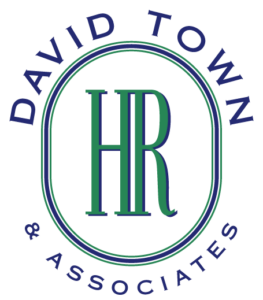Maximizing Personal Productivity Part 3 – Time Management: How to Plan What to Do

This blog is the third in a series on the topic of “Maximizing Personal Productivity”. Part 1 & 2 focused on understanding the mindset of time being a fixed resource and on the process required to make decisions that maximize the productive use of time. In Part 3, we will review how to “Organize” and “Assess” incoming work, as part of the process for making good decisions on how to spend time.
The “Organize” Phase
The “Organize” phase of the process is all about collecting and managing incoming work so that you’ll have a very good understanding of the different choices regarding how to spend your time. You need a strategy for capturing all the deferred items in one place so you can refer to them later. During the process of organizing work, you either put a task or commitment to do something on a list somewhere – a list you refer to every day – or you put them in a calendar that you refer to every day.
The “Assess” Phase
The “Assess” phase of the process is all about reviewing your list of deferred items (often stored in a “To Do” list) and planning how to spend your time. A quote that has really stuck with me is:
“You can anything you want; you just can’t do everything you want” (author unknown).
Know Your Options Then Pick the Best Ones
Don’t try to do everything that comes your way. Be able to say no (or not now). This is a lot like financial budgeting. You identify all of the things you could spend your money on and then you review the list and decide how to spend based on the resources you have. You make a plan. The plan is based on identifying what adds the most value.
The “time management” planning process is all about sorting the list (prioritizing) according to the activities that provide the most value in meeting what you want to achieve each day, week, month, etc. The definition of what is valuable is different for every person and is based on your goals.
In order to be good at managing how you spend your time, you have to know what adds value for you.
Move from Intention to Commitment
Once you have mapped out a plan for how to spend you time, you should move from an intention to a commitment. A few times each week, get your calendar out and start plugging each activity into it, starting at the top of the list. If you just work from the planning list, you are more likely to miss important tasks – particularly if they are not really urgent.
Don’t Waste Time on Urgent Tasks that are Not Important
One of the biggest time wasters is spending time on urgent tasks that are not important. Meetings can be a classic example of this. If you attend a meeting and at the end of the meeting you don’t feel you got any value or added any value, you just spent time on a low-return activity. Don’t go to a meeting just because you’re invited. Go because it adds value to the achievement of the goals you are committed to.
Anticipate Room for Unexpected Urgent Matters
When populating your calendar, remember to leave room for discretionary choices. If experiences tells you that everyday you spend an hour or two dealing with issues that are urgent and important that require your attention, leave space in your calendar to accommodate this.
Populating your calendar with the prioritized To Do list tasks provides three very important benefits.
- It creates a sense of urgency around important tasks so that they don’t get deferred to do less important tasks.
- You have a very good idea of what can be accomplished by the end of the day. If there are very important activities on the list that the calendar didn’t have room for, it is much easier and less stressful to deal with that issue at the beginning of the day than at the end of the day.
- Possibly the most important benefit is that by committing tasks to a calendar, you increase your focus and your spending can be more carefully measured and analyzed for improvement.
Four Actions for Sorting Work
In the previous blog, I introduced the process for sorting work that involves acting in one of four ways to determine what to do with the incoming opportunity to spend time.
- Dismiss it (delete it)
- Deal with it (do it now)
- Defer it (do it later)
- Delegate it
When you have a plan in place and your calendar is populated, choosing which of the four options is best is very straight-forward if you have a clear idea of what is important (what adds value).
Don’t do something because it is urgent, do it because it adds value.
Planning has to happen on a regular basis. There is an old adage: “If you fail to plan, you plan to fail”. Understand your choices and make the most of them.
Part 4 in this series will continue to explore how to maintain your focus.
As always, I welcome your feedback. You can connect with me via email or telephone or leave a comment right here on the site.
Until next time,
Dave
David Town, ACC, CHRL, is a coach and facilitator of leadership and management principles that enable individuals and organizations to build greater leadership competency, resulting in higher performance and higher employee engagement. David has a particular focus on performance management and effectively managing conversations involving confrontation or conflict. As well, he provides insights and assessment strategies for integrating character competencies into leadership skills resulting in increased trust and reduced risk for leaders. David is a member of the International Coaching Federation and is President of Your Leadership Matters Inc.



 Have you ever had one of those days where you know you worked really hard and didn’t feel like you achieved anything? It’s often referred to as spinning your wheels. This often happens because we over-commit and fail to make good choices or have difficult conversations in order to maintain balance in our schedule and in our lives.
Have you ever had one of those days where you know you worked really hard and didn’t feel like you achieved anything? It’s often referred to as spinning your wheels. This often happens because we over-commit and fail to make good choices or have difficult conversations in order to maintain balance in our schedule and in our lives.